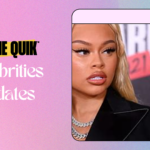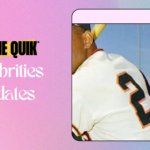What does it take to be a household name and still have a net worth of $25 million? For Hulk Hogan, once a titan of the wrestling ring, it’s a blend of grit, glamour, and a touch of controversy that paints the picture. As we dive into Hogan’s financial saga, we’ll unravel how he transformed from a grappling giant in the 1980s to a pop culture phenomenon, navigating through lucrative endorsements and business ventures, not to mention a divorce that could rival any soap opera plot. Buckle up, because the path to Hulkamania was paved with more than just body slams!
How rich is Hulk Hogan now?
As of 2024, Hulk Hogan’s net worth is estimated to be around $25 million. This substantial figure is a testament to his remarkable journey through the world of professional wrestling and extends beyond the ring, encompassing a variety of business ventures and lucrative endorsements that he has managed over the years.
Hogan, whose real name is Terry Gene Bollea, achieved legendary status in the 1980s and 90s, not just as an athlete competing in massive wrestling events, but also as a pop culture icon. His annual earnings peaked at an impressive approximately $10 million during the height of his career, primarily from contracts with major wrestling promotions such as WWE and WCW. However, his financial narrative took a tumultuous turn due to significant losses stemming from a highly publicized divorce settlement with his first wife, Linda Bollea, and the infamous Gawker lawsuit, where he initially sought $100 million for a breach of privacy. The jury awarded him a landmark $140 million, but post-legal fees and settlements that followed shrank this amount to about $31 million.
Despite these setbacks, Hogan’s business acumen has kept him afloat. He has ventured into various enterprises, from restaurants to energy drinks, capitalizing on his extensive brand recognition. Hogan’s ability to remain relevant, coupled with a resilient persona, continues to make his financial portfolio a subject of curiosity among fans and industry insiders alike. The persistence of his brand has opened doors to ongoing income from merchandise, public appearances, and television projects, firmly establishing him as a lasting figure in entertainment history. Whether through nostalgia or the ongoing interest in wrestling, Hulk Hogan remains a significant player in the financial landscape of sports entertainment.
How much did Hulk Hogan’s wife receive in the divorce settlement?
Hulk Hogan’s ex-wife, Linda Claridge, walked away from their divorce with a significant financial settlement that reflects the couple’s considerable wealth accumulated during their marriage. Specifically, she received more than 70% of their liquid assets, which is a notable figure that underscores her entitlement to the wealth generated during Hogan’s peak wrestling years. Furthermore, Linda secured a 40% ownership stake in Hogan’s various companies, ensuring her continued benefit from his business ventures even after their separation. The settlement also included a cash payment of $3 million for property division, which adds to the substantial financial package.
Looking at the investment accounts, Linda was awarded $7.44 million, leaving Hogan with a relatively small sum of $2.97 million from the remaining investments. This glaring discrepancy highlights the financial imbalance that often occurs in high-profile divorces, where one partner may reap a larger share of the couple’s wealth. Overall, Linda’s divorce settlement paints a picture of the complexities and considerations involved in financial divisions of celebrity marriages, especially those that had been intertwined with lucrative professional careers and business dealings.
How does Hulk Hogan make money?
Hulk Hogan generates income through a diverse array of avenues, most notably his illustrious and iconic wrestling career. As one of the most recognized figures in professional wrestling, he amassed significant earnings from contracts with major wrestling promotions, especially WWE and WCW. At the height of his fame during the 1990s, Hogan’s annual earnings soared to around $10 million, a testament to his undeniable star power and drawing ability, particularly during marquee events like WrestleMania.
However, Hogan’s financial ventures extend well beyond the wrestling ring. He successfully transitioned into acting, making notable appearances in films such as “Rocky III” as Thunderlips and starring in his own projects like “No Holds Barred” and “Suburban Commando.” This foray into Hollywood not only enhanced his profile but also added significant revenue to his portfolio.
Moreover, Hogan embraced reality television with shows like “Hogan Knows Best,” which showcased his family life and drew in substantial viewership. This exposure allowed him to capture a different segment of the entertainment audience, contributing further to his financial well-being.
On the business front, Hulk Hogan has embarked on a variety of entrepreneurial ventures, from launching restaurants such as Pastamania and Hogan’s Beach, to creating his own energy drink, Hogan Energy, as well as frozen food products like “Hulkster Burgers.” These entrepreneurial pursuits highlight Hogan’s savvy in brand marketing and merchandising, allowing him to leverage his popularity to generate additional income streams.
In short, Hulk Hogan’s wealth is a product of not just his wrestling exploits but a multifaceted career that traverses acting, reality television, and business entrepreneurship, reflecting his adaptability and enduring appeal across different entertainment platforms.
What was the outcome of Hulk Hogan’s Gawker lawsuit?
Hulk Hogan’s lawsuit against Gawker culminated in a landmark victory for the wrestling icon, significantly impacting the media landscape and privacy laws. Originally, Hogan sought a staggering $100 million in damages following the unauthorized release of a private sex tape by Gawker in 2012, claiming severe emotional distress and invasion of privacy.
After a dramatic courtroom battle, a Florida jury ultimately awarded him $140 million, a sum that indicated the jury’s recognition of the egregiousness of the breach. However, shortly after Gawker’s subsequent bankruptcy filing in 2016, the two parties reached a settlement, with Hogan receiving $31 million as part of the resolution.
This legal confrontation did more than just settle a dispute between Hogan and Gawker; it raised critical questions about the responsibilities of media outlets when it comes to handling sensitive and private information. It also sparked discussions around the broader implications for privacy rights, leading to a reevaluation of how such content is disseminated and the potential consequences for infringement. Hogan’s victory has since been seen as a cautionary tale for media outlets, emphasizing the importance of respecting individuals’ privacy at all costs.
Who are the highest-paid wrestlers and how does Hulk Hogan compare?
As of 2024, Brock Lesnar solidifies his status as the highest-paid WWE wrestler, raking in an impressive annual income of approximately $12 million. This staggering amount is more than double the salaries of numerous other wrestlers in the industry, showcasing his immense value as a marquee attraction.
In contrast, Hulk Hogan, a legendary icon in wrestling history, has seen his earnings decline significantly from his peak in the 1990s, when he was one of the highest earners in the sport. Though Hogan may no longer compete at the forefront of WWE’s salary ranks, his enduring legacy and respect within the wrestling community keep him a beloved figure among fans and fellow wrestlers alike.
The evolution of wrestler salaries illustrates the changing landscape of professional wrestling, where factors like marketability, drawing power, and contractual arrangements play crucial roles. Lesnar’s lucrative earnings reflect his unique ability to draw crowds and generate viewership, while Hogan’s historical contributions laid the foundation for the industry as we know it today. The disparity in their earnings highlights not just the passage of time, but also the shifts in entertainment dynamics and audience engagement that have occurred over the decades.













